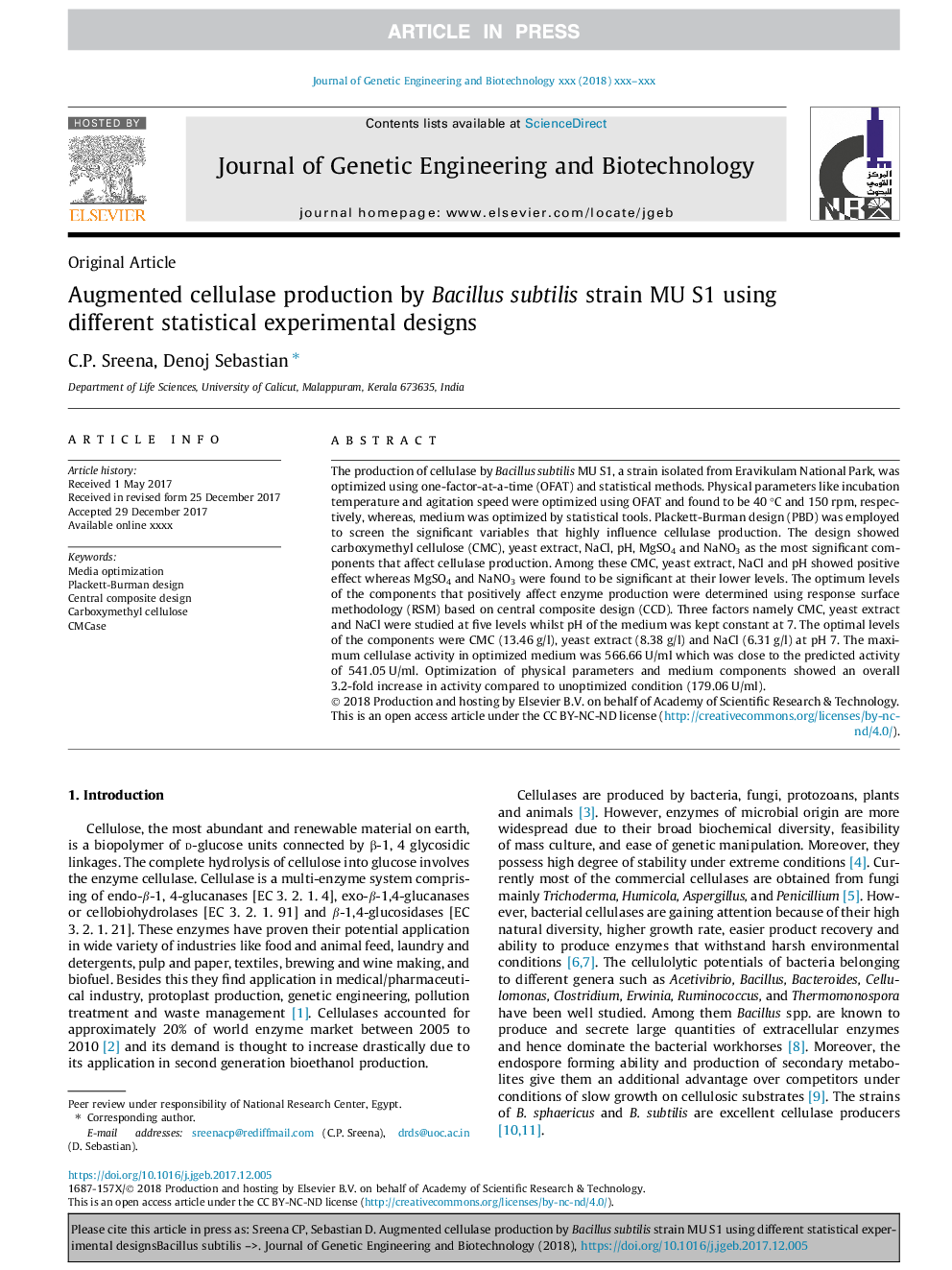| Article ID | Journal | Published Year | Pages | File Type |
|---|---|---|---|---|
| 8416253 | Journal of Genetic Engineering and Biotechnology | 2018 | 8 Pages |
Abstract
The production of cellulase by Bacillus subtilis MU S1, a strain isolated from Eravikulam National Park, was optimized using one-factor-at-a-time (OFAT) and statistical methods. Physical parameters like incubation temperature and agitation speed were optimized using OFAT and found to be 40â¯Â°C and 150â¯rpm, respectively, whereas, medium was optimized by statistical tools. Plackett-Burman design (PBD) was employed to screen the significant variables that highly influence cellulase production. The design showed carboxymethyl cellulose (CMC), yeast extract, NaCl, pH, MgSO4 and NaNO3 as the most significant components that affect cellulase production. Among these CMC, yeast extract, NaCl and pH showed positive effect whereas MgSO4 and NaNO3 were found to be significant at their lower levels. The optimum levels of the components that positively affect enzyme production were determined using response surface methodology (RSM) based on central composite design (CCD). Three factors namely CMC, yeast extract and NaCl were studied at five levels whilst pH of the medium was kept constant at 7. The optimal levels of the components were CMC (13.46â¯g/l), yeast extract (8.38â¯g/l) and NaCl (6.31â¯g/l) at pH 7. The maximum cellulase activity in optimized medium was 566.66â¯U/ml which was close to the predicted activity of 541.05â¯U/ml. Optimization of physical parameters and medium components showed an overall 3.2-fold increase in activity compared to unoptimized condition (179.06â¯U/ml).
Keywords
Related Topics
Life Sciences
Biochemistry, Genetics and Molecular Biology
Biotechnology
Authors
C.P. Sreena, Denoj Sebastian,
